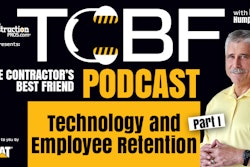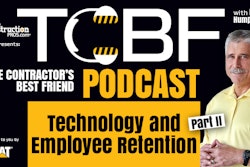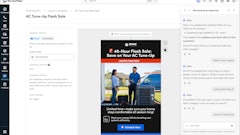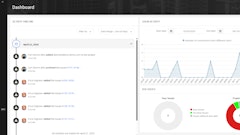Editor's Note: The first installment of this article was initially published in June. This is the second, and final, portion of the article. You can read the first half here.
Open Communication
An open line of a communication between an employee and his or her manager is a critical goal in ensuring employee satisfaction. A manager is the key in this element of the retention plan, and ideally he or she should receive training in communication and its importance to retaining employees. In addition to training managers in communication, implementing specific strategies will help facilitate open communication. A few ways managers can promote open communication include:
- Management by wandering around (MBWA). Managers will benefit from periodic, informal day-to-day discussions with employees in order to understand what challenges they face and what can be done to further enhance their short- or long-term experiences with the organization.
- "Hands-on" management. Managers who show a willingness to work side-by-side with employees also demonstrate their compassion and commitment to the team's success. Offering assistance with projects creates a feeling of mutual respect and enhances the relationship between manager and employee.
- Informal meetings. Managers should hold breakfast, lunch or regular meetings with their employees. Hyler Bracey, author of Managing From the Heart, explains that employees want to be heard and understood, and that they want managers to be compassionate and truthful. Meetings where management and employees share time discussing goals and strategies, as well as providing feedback to one another can go a long way in making employees feel valued. An informal lunch meeting helps a manager stay in touch with an employee's day-to-day concerns so he or she can provide assistance as necessary. Managers should encourage feedback, suggestions and ideas - showing employees their opinions are valued.
Develop Employee Surveys. While informal meetings can facilitate open communication, another strategy to encourage communication is a survey. Employee surveys can illustrate how an employee feels about many things such as employee engagement (satisfaction with supervisor, communication with supervisor, performance feedback, career development and growth, and feelings about integration), along with thoughts about geographic location and fellow employees. A leader or manager's role is to develop an understanding of what is important to each employee. What concerns does an employee have, what motivates that person and what are the employee's goals? Surveys can also help managers bridge the generation gap by identifying the motivational factors important to each generation. When preparing company surveys, don't forget to include managers. Surveys designed for managers are another important link to what employees are facing. Managers who have their fingers on the pulse of their team and the job market can provide valuable information with respect to employee morale and challenges.
Other Tips for Success
To further facilitate communication and ensure open, honest feedback, some organizations assign a sponsor who works in a different department or office. A sponsor who works outside of the department can obtain sincere feedback from employees who don't feel as comfortable talking about serious issues with their managers. The employee sponsor, however, must have a direct link with company owners and executives in order to provide solutions. Exit interviews also help managers identify current practices, trends, or challenges affecting the workforce. They can reveal how employees really feel about your company's pay structure, growth potential, benefit plans, culture, etc. This information is critical in understanding what actions are needed to improve an organization's culture.
Also be sure to volunteer and help facilitate the development of company feedback systems, committees and other forums designed to solicit information from employees. More important, be prepared to take action on the feedback. And, don't wait until a formal annual review to open the lines of communication - by then it may be too late. Good communication is the by-product of a concerned manager making a consistent effort toward finding out what his or her employees are facing.
Rewards and recognition are yet another crucial component to the success of your retention program because they confirm to the employees that their efforts are meaningful and appreciated. One of the easiest and best ways to reward employees is to simply congratulate employees on a job well done. Long hours and hard work that go unnoticed will leave employees feeling deflated. Other forms of recognition include service awards, congratulatory/promotion letters signed by top executives, promotion announcements on the company intranet, in a company newsletter or trade publication and public accolades at company meetings. Companies might consider a systematic compensation/bonus program designed to establish milestones and reward top performers.
Finally, don't underestimate the balance between work and play. For a number of employees, work might not be the top priority in their lives. Everyone has certain needs, whether it's related to family, financial well-being, spiritual connections, hobbies and extracurricular projects. Today's workers are more interested than ever before in balancing work and personal life. Hard-working employees want to know that they can leave early if necessary to pick children up from school or to watch a child's soccer game. Companies must determine which work/life benefits will best fit their culture and coincide with their operating principles. Simply put, organizations that acknowledge the need for balance in their employees lives will, without a doubt, create loyalty among their staff.
Even with the best of efforts, some employees are bound to leave no matter what a business does. The fact is there are many companies offering challenging and exciting work. So how will your company stand out from the competition? When an organization is willing to devote the necessary time, resources and energy toward cultivating and developing its most valuable assets - its people - growth and long-term success are inevitable.
About Structural Group
As one of the nation's leading specialty contractors, Structural Group is comprised of three dynamic and diversified companies. Structural Preservation Systems is the largest specialty contractor focusing on structural repair and strengthening. VSL is the technical leader in post-tensioning and specialty reinforcement. And, Pullman Power leads the industry in chimney, silo, and stack construction, maintenance, and repair. From 25 operating centers around the United States, Structural Group businesses perform a wide range of projects involving industrial facilities, commercial properties, public infrastructure and municipal buildings. For more information about Structural Group, visit www.structural.net.




















